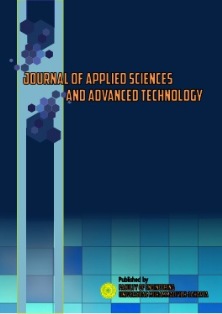Analysis of the Potential for Savings in Electrical Energy Consumption in Lifts: Case Study in Indonesia
DOI:
https://doi.org/10.24853/jasat.3.1.29-34Keywords:
Elevator, Regenerative Drive, vertical transport, Energy ConsumptionAbstract
Regenerative Drive is a motor drive system in an elevator that can also generate electrical energy while consuming electrical energy in the elevator machine, Regenerative Drive converts gravitational potential energy into electrical energy by utilizing the operating characteristics of the lift and the weight difference between the lift cage and the load balancing (Counterweight). ). The resulting regenerative power is recovered by returning to the building electricity and being used in other electrical equipment. Regenerative drive lift test location is located in Building which has an elevator using Regenerative Drive. With a motor power of 38.6 kW and can produce regenerative power of 29 kW.Downloads
References
Dermawan, E., Almanda, D., Ramadhan, D. E., Diniardi, E., Syawaluddin, Ramadhan, A. I., (2017). Preliminary Study Design Model for Harmonic Filter of Power System Stability Using ETAP Powerstation. ARPN Journal of Engineering and Applied Sciences, 12 (16), 4684-4688.
Almanda, D., & Ramadhan, A. I. (2019). Design Optimization of Distance Grid and Ground Rod in the Earth System. Journal of Applied Sciences and Advanced Technology, 2(2), 53-58.
Syawaluddin, Diniardi, E., Ramadhan, A.I., Fithriyah, N. H., Dermawan, E. (2019). Analysis study of angle effect on power in solar cell of hybrid model solar cell-piezoelectric. ARPN Journal of Engineering and Applied Sciences, 14 (2), 377-380.
Dermawan, E., Almanda, D., Zahro, L., Ramadhan, A. I., & Diniardi, E. (2016). Analysis Magnetization Current of Harmonic Phenomena and Power Factor as Indicators of Core Saturation at Transformer 3-Phase. Journal of Power and Energy Engineering, 4(5), 1-6.
Rahardja, I.B., Prumanto, D., Muchayar, Ramadhan, A.I. (2019). Hardening Of Iron St 37 With Various Heat Treatments Using Cooling Crude Palm Oil (CPO). International Journal of Scientific & Technology Research. 8(9). 1275-1280
De Almeida, A., Hirzel, S., Patrão, C., Fong, J., & Dütschke, E. (2012). Energy-efficient elevators and escalators in Europe: An analysis of energy efficiency potentials and policy measures. Energy and buildings, 47, 151-158.
Saidur, R. (2009). Energy consumption, energy savings, and emission analysis in Malaysian office buildings. Energy policy, 37(10), 4104-4113.
Hui, C., & Yeung, C. Y. (2016, December). Analysis of standby power consumption for lifts and escalators. In The 7th Greater Pearl River Delta Conference on Building Operation and Maintenance (pp. 35-47).
Patrão, C., De Almeida, A., Fong, J., & Ferreira, F. (2010, August). Elevators and escalators energy performance analysis. In ACEEE Summer Study on Energy Efficiency in Buildings.
Tukia, T., Uimonen, S., Siikonen, M. L., Hakala, H., Donghi, C., & Lehtonen, M. (2016). Explicit method to predict annual elevator energy consumption in recurring passenger traffic conditions. Journal of Building Engineering, 8, 179-188.
Korniyenko, S. V. (2014). The experimental analysis and calculative assessment of building energy efficiency. In Applied Mechanics and Materials (Vol. 618, pp. 509-513). Trans Tech Publications Ltd.
Gul, M. S., & Patidar, S. (2015). Understanding the energy consumption and occupancy of a multi-purpose academic building. Energy and Buildings, 87, 155-165.
Casals, M., Gangolells, M., Forcada, N., Macarulla, M., & Giretti, A. (2014). A breakdown of energy consumption in an underground station. Energy and buildings, 78, 89-97.
Gordo, E., Campos, A., & Coelho, D. (2011, July). Energy efficiency in a hospital building case study: Hospitais da universidade de Coimbra. In Proceedings of the 2011 3rd International Youth Conference on Energetics (IYCE) (pp. 1-6). IEEE.
Uimonen, S., Tukia, T., Siikonen, M. L., Lange, D., Donghi, C., Cai, X. L., ... & Lehtonen, M. (2016). Energy consumption of escalators in low traffic environment. Energy and Buildings, 125, 287-297.
Lin, K. Y., & Lian, K. Y. (2017, November). Actual measurement on regenerative elevator drive and energy saving benefits. In 2017 International Automatic Control Conference (CACS) (pp. 1-5). IEEE.
Ibrik, I. H., & Mahmoud, M. M. (2005). Energy efficiency improvement procedures and audit results of electrical, thermal and solar applications in Palestine. Energy Policy, 33(5), 651-658.
Tallini, A., & Cedola, L. (2016). Evaluation methodology for energy efficiency measures in industry and service sector. Energy Procedia, 101, 542-549.
Guan, X., Xu, Z., & Jia, Q. S. (2010). Energy-efficient buildings facilitated by microgrid. IEEE Transactions on smart grid, 1(3), 243-252.
Downloads
Published
Issue
Section
License
COPYRIGHT POLICY
The author(s) of an article published in the Journal of Applied Sciences and Advanced Technology (JASAT) retains ownership of the intellectual property rights in work (s).
PUBLISHING RIGHTS
The author(s) of an article published in the Journal of Applied Sciences and Advanced Technology (JASAT) have unrestricted publication rights. The authors give the Journal of Applied Sciences and Advanced Technology (JASAT) the right to publish the article and designate the Faculty of Engineering Universitas Muhammadiyah Jakarta Publishing as the original publisher of the article.
LICENSING POLICY
JASAT is an open-access journal that follows the Creative Commons Non-Commercial 4.0 International License (CC BY-NC 4.0), which states that:

Under this license, the reusers must give appropriate credit, provide a link to the license, and indicate if changes were made. Users may do so in any reasonable manner, but not in any way that suggests the licensor endorses users or their use.
Please take the time to read the whole license agreement (https://creativecommons.org/licenses/by-nc/4.0/). As long as reusers follow the license conditions, the owner cannot withdraw these freedoms. The following components are included under this license:
 Attribution: Users must provide appropriate attribution, including a link to the license, and indicate whether or not they made any modifications. Users are free to do so reasonably, but not in a manner that indicates the licensee approves of their usage.
Attribution: Users must provide appropriate attribution, including a link to the license, and indicate whether or not they made any modifications. Users are free to do so reasonably, but not in a manner that indicates the licensee approves of their usage.
 NonCommercial: Users may not use the material for commercial purposes.
NonCommercial: Users may not use the material for commercial purposes.












_2.png)


1.png)

2.png)
